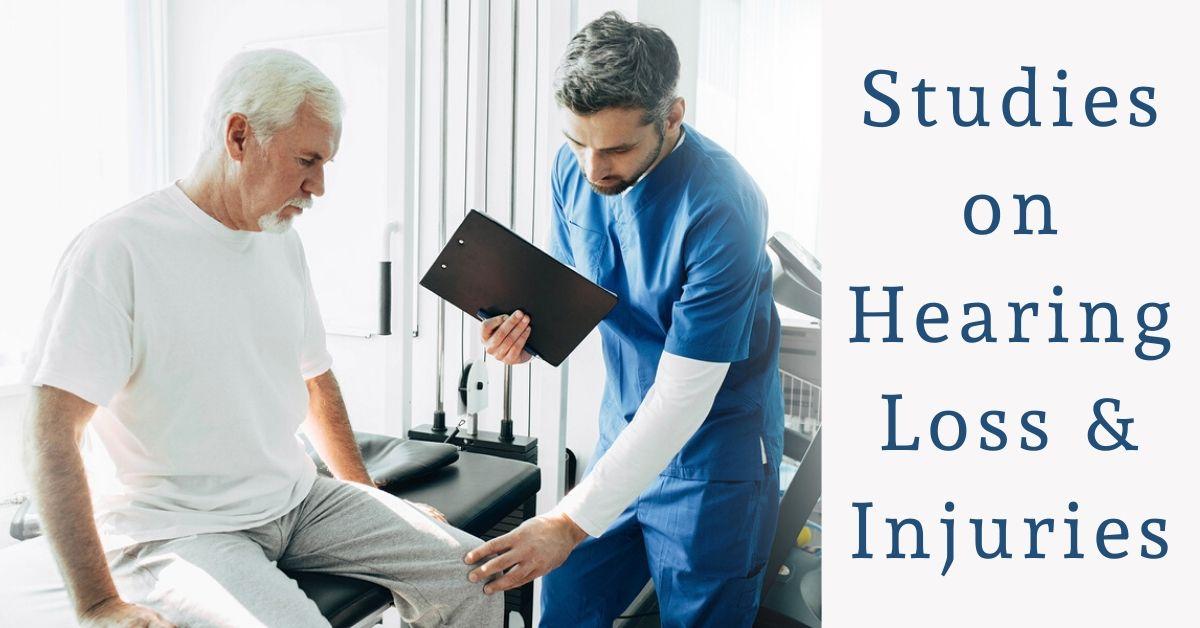
- Better Hearing Starts with One Test - June 6, 2025
- Common Fears About Hearing Tests - May 28, 2025
- Best Hearing Aids for Active Lifestyles - May 16, 2025
Accidental injury is a significant issue in the United States. This includes car accidents and falls which contribute to unintentional injuries being a leading cause of death. Significant work has been done to identify the circumstances that can increase the risk of unintentional injuries. Factors such as chronic health conditions and sensory impairments can drastically contribute to experiencing injuries. Hearing loss is one of the most common sensory impairments, impacting 1 in 6 people. The connection between hearing loss and injuries has been investigated for a number of years. Research shows that hearing loss does increase the risk of accidental injuries. Here is some of the latest research findings:
Quick Statistics
- Accidental Injuries (in 2017)
-
- Accounted for nearly 40 million doctor’s visits
- Resulted in nearly 30 million emergency room visits
- Third cause of death
- 1 in 8 people (aged 12 and older) have some degree of hearing loss, nearly 30 million total
- About 50% of adults 75 and older have disabling hearing loss
- 28.8 million people could benefit from using hearing aids
Latest Research
There are numerous studies that show the increased risk of injury for people with hearing loss. Two studies that focus on adults and children include:
- 2018: Self-reported Hearing Difficult and Risk of Accidental Injury in U.S. Adults, published in JAMA Otolaryngology-Head & Neck Surgery
- Objective: to investigate the connection between hearing loss and risk of accidental injuries among adults.
- Study: researchers examined data collected on the National Health Interview Survey from 2007 to 2015 that was a representative sample of 232.2 million people. Participants, aged 18 and older, responded to questions about their hearing and experience of injuries. They self-reported their hearing as: excellent, good, a little trouble, moderate trouble, a lot of trouble, or deaf. Additionally, they self-reported if they experienced any accidental injuries in the previous 3 months.
- Findings:
- 6.6. million people reported experiencing unintentional injuries
- The rate of reported injury increased with degree of hearing loss
- 60%: a little trouble hearing
- 70%: moderate trouble hearing
- 90%: a lot of trouble hearing
- Adults with more significant hearing loss were nearly twice as likely to experience injury
- 2007: Children With Hearing Loss and Increased Risk of Injury, published in the Annals of Family Medicine
- Objective: to investigate the connection between children with hearing loss and risk of accidental injuries.
- Study: using Medicaid billing data from 2002-2003 in South Carolina, researchers identified and collected data on children (aged 1 to 18) with and without diagnosed hearing loss and emergency room visits or medical treatment for accidental injuries.
- Findings:
- The rate of unintentional injury among children with hearing loss was significantly higher than among children without hearing loss
- Children with hearing loss: 17.72%
- Children without hearing loss: 8.58%
- Children with hearing loss were more than twice as likely to experience accidental injury
Prevention
These studies reveal that adults with more severe hearing loss and children with hearing loss were both twice as likely to experience injuries! These significant statistics unfortunately show that accidental injuries are more common for people with hearing loss. As Dr. Neil Bhattacharyya, one of the researchers involved in the 2018 study, stated in an interview with Reuters, “hearing is a special sense and as such, one of its prime sensory functions is as a warning system for the body”. When hearing is impaired, people’s ability to hear warning signs (honks, sirens, voices cautioning them etc.) and oncoming danger is reduced.
The most important way people can prevent injuries is to address and treat their hearing loss. This involves scheduling an appointment with a hearing healthcare specialist for a hearing test. Hearing assessments are a noninvasive process that determine the degree of impairment and the specific type. This information is then used to establish the most useful treatment options to meet your specific hearing needs. Luckily, there are effective ways that hearing impairment is treated. The most common treatment is hearing aids. As previously mentioned, there are millions of people (adults and children) that could benefit from the use of hearing aids that do not use them. These small devices work to absorb, amplify, and process sound. This significantly increases one’s ability to hear which has countless benefits!
